Realizing Children’s Rights in Gabon
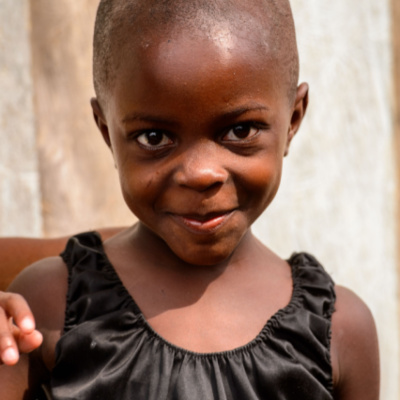
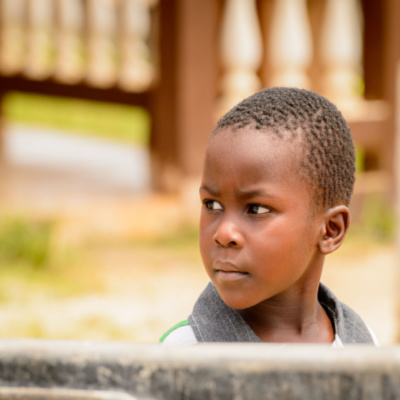
Children in Gabon have numerous roadblocks that prevent them from realising and living a life where all their rights are respected and upheld. Although there is development in certain sectors, there is still a prevalence of child labour, child trafficking, adolescent pregnancies and lack of access to basic facilities.

Children’s Rights Index: 7,71 / 10
Orange level: Noticeable problems
Population: 2.2 million
Pop. ages 0-14: 37%
Life expectancy: 66.47 years
Under-5 mortality rate: 42.5‰
Gabon at a glance
Gabon is a country located along the Atlantic Coast of Central Africa, bordered by Cameroon and Equatorial Guinea to the north, and the Republic of Congo to the east and south. Geographically, it is primarily composed of plateaus and hills, along with an extremely dense hydrological network that feeds two rivers, Ogooué and Nyanga, along with high basins of small northern coastal rivers. In terms of weather, the country houses a climate that is humid and hot- typical of tropical regions (World Bank Climate Change Knowledge Portal , n.d.).
Despite being a country with forests sweeping through 85% of its territory, Gabon has one of the highest urbanisation rates in Africa with more than four amongst five citizens living in cities. Libreville, the capital, and Port Gentil, often referred to as the economic capital of the country, are both homes to 59% of the population (World Bank, 2021).
History is essential in one’s understanding of a country and the fact that it is the foundation upon which the present stands is a testament to its absolute and irrevocable importance. Gabon’s history is one tinted by the effects and consequences of colonisation with the first accounted colonizers being Portuguese navigators who arrived at Gabon in 1472 up until French control of the country (Gardinier, 2021).
Gabon became one of the four colonies within the federation of French Equatorial Africa in 1910 and although there was little resistance to French occupation, labour taxes for public projects, interference with trade, and the French policy implemented between 1898-1914 that developed the economy through monopolistic concessionary companies brought forth a considerable amount of opposition as these changes had harsh consequences for agricultural production, trade, and settlement (Gardinier, 2021).
In between the two world wars, an anti-colonialist but pro-French elite emerged in the country after which, members became politicians who held office during the Fourth French Republic when Gabon acquired its own assembly representation in the French Parliament. During this period France invested significantly in the economic, health and education sectors and in 1958, Gabon became an autonomous republic within the French Community. On 17 August 1960, after settling cooperation agreements with France, Gabon achieved independence (Gardinier, 2021).
The republic’s first president Léon M’ba, created a single-party regime and this was met by a rebellion by young military officers. However, support from President Charles de Gaulle as a result of strong French economic interest in the region, ensured his return to power. Following M’bas death, Albert-Bernard Bongo rose to power and established a single-party regime (Bongo’s Gabonese Democratic Party) under which he was elected to the presidency in 1973. In 1990, anti-government demonstrations arising from government-imposed austerity measures resulted in constitutional amendments and restoration of the multiparty system. Despite this, Bongo was re-elected in 1993 and 1998 in an election that was notoriously plagued with allegations of fraud (Gardinier, 2021).
A system steeped in corruption set the stage for Gabon’s numerous financial issues. Government officials and business leaders made up 2% of the population but controlled 80% of all personal income. Demanding large salaries, diverting funds, and transferring large sums of money led to a financial drain and by the late 1990s, Gabon was under heavy pressure from the International Monetary Fund (IMF) to privatize state corporations and stop diverting state funds (Gardinier, 2021).
A constitutional amendment that removed presidential term limits passed in 2003, allowed Bongo to participate and consequently win the 2005 election. Passing away in 2009, Senate President Rose Francine Rogombé was sworn in as interim president after which Ali Ben Bongo assumed control despite an election that spurred violence and outrage based on the belief that his victory was a by-product of fraud and voting irregularities. Winning again in the 2016 presidential elections he continues to exercise his power over the country (Gardinier, 2021).
Status of children’s rights[1]
On an international platform, Gabon has ratified the Convention on the Rights of the Child (CRC). Additionally, Gabon has also ratified the Optional Protocol on the sale of children, child prostitution and child pornography in 2007, and the Optional Protocol on the involvement of children in armed conflict in 2010.
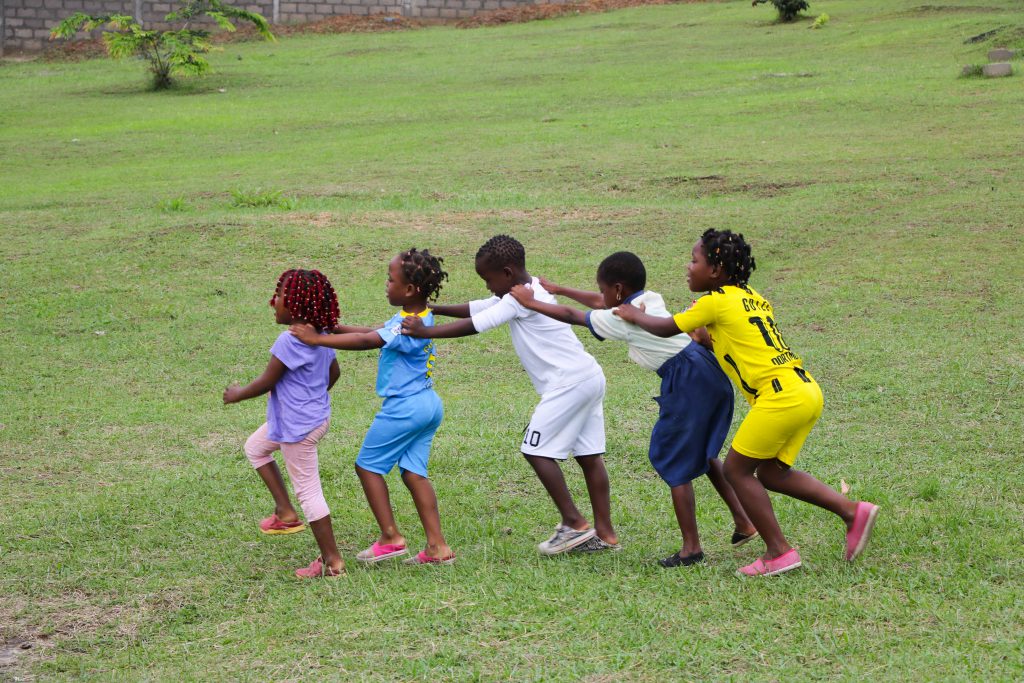
In regard to other international treaties, Gabon has signed as well as ratified a fair few. They ratified the Convention against Torture and Other Cruel Inhuman or Degrading Treatment or Punishment in 2000, the Convention on the Rights of Persons with Disabilities in 2007, and signed but did not ratify the International Convention on the Protection of the Rights of All Migrant Workers and Members of Their Families in 2004.
In terms of treaties and conventions within Africa, Gabon ratified the African Charter on the Rights and Welfare of the Child in 2007. This is an essential document when concerning the fight to manifest children’s rights and although it shares a lot of the principles that the UN Convention on the Rights of the Child advocates, it is focused specifically on realities within the African context. As of June 2021, only five Member States of the African Union have not ratified it. These are Morocco, Tunisia, Somalia, South Sudan and Sahrawi Arab Democratic Republic (ACERWC, 2021).
Addressing the needs of children
Right to education
In regard to education, there have been significant measures taken, one of which is making it free and compulsory for all children – an action that has been put into place since 1966. Furthermore, Law 021 of 2012 targets the accessibility and provision of education ensuring it to be compulsory from the age of three (OHCHR, 2016). Although education in Gabon is compulsory, the standard age range of students lasts ten years starting from the age of six up until the age of fifteen (UNESCO, n.d.).
Despite having established a system that aims at providing and upholding educational rights for children, the reality is altogether a grimmer picture. Even though primary school enrolment is at 90% by the time children reach secondary school there is an escalation in dropout rates that results in only 57% of girls and 48% of boys reaching that level of education (UNICEF, n.d.).
Gabon’s history has resulted in the primary language being French and the country has one of the highest literacy rates in sub-Saharan Africa. There has been significant growth in this area with a rise of 83.2% of literate adults in 2015 as compared to the 36.8% of illiterate adults in 1995 (Paez, 2017).
Although the Law on General Education ensures the right to free and compulsory education, students have to be able to provide for their own supplies and school fees which in turn may be prohibitive. In rural Gabon, not only is there a lack of schools and teachers, but primary-level education is most often not available. Additionally, some children, more often than not, girls, are sexually abused at school and for children living in rural areas, access to birth certification is uncommon and this document being a necessity for school enrolment results in children often not being able to attend school and being vulnerable to forms of exploitation (Bureau of International Labor Affairs, 2020).
Right to health
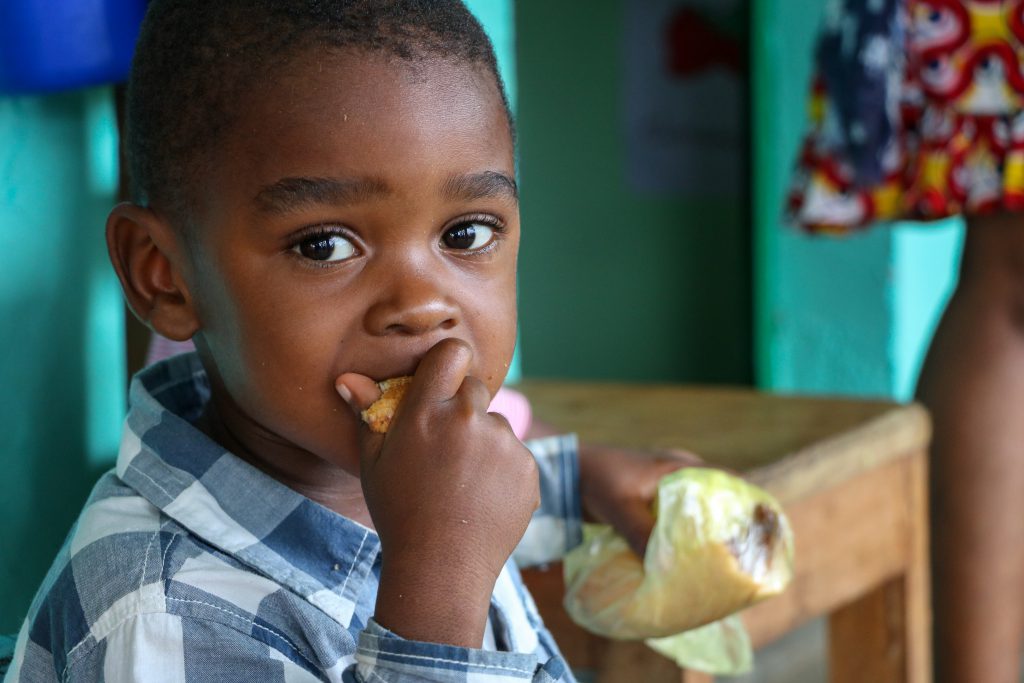
Despite Gabon’s economy being placed in the upper-middle-income tier, the reality is that poverty still remains to be a pressing issue which in turn results in being a contributor to declining health amongst the population (Obounou, 2017). There has been investment by the government in health infrastructure but diseases such as malaria, infant mortality, and HIV/AIDS, remain to be the leading causes of mortality. Worsening the situation is the fact that there is a constant shortage of hospital beds – the number of hospital beds per 1,000 people is only 6.3 with only six doctors and four midwives per 10,000 of the overall population (Obounou, 2017).
The increase in public funding has been crucial in significantly decreasing out-of-pocket payments. In 2007, the launch of health financing reforms brought to light the fact that out-of-pocket payments constituted 50% of total health expenditures but by 2016, the amount dropped to 23% making Gabon the country with the lowest percentage among CEMAC member nations (WHO).
The national healthcare system of Gabon , Caisse Nationale d’Assurance Maladie et de Garantie Sociale (CNAMGS) came about in 2008. Although it began by extending healthcare coverage to students, the poor and the elderly, in 2011 it had extended coverage to the public-sector workers and in 2013, to the private sector workers (Kuo, 2020).
In regard to maternal healthcare, the National Health Strategy provides 100% covered maternal healthcare. Despite this, the rates of maternal mortality cannot be neglected and as of 2015, there were 261 deaths per 100,000 live births (Kuo, 2020).
Although there is a significant development in the healthcare system in Gabon as compared to other countries in the region, healthcare spending accounts for only 3.44% of the country’s total GDP, resulting in the country spending less on healthcare as compared to other neighbouring countries like Cameroon, Chad, Equatorial Guinea , the Democratic Republic of Congo despite being an upper-middle-income country (Kuo, 2020).
Right to clean water and sanitation
Although there is an abundance of water quality in Gabon, high levels of urbanization cause a strain on access to drinking water, with 87% of the country’s population living in urban areas. The demand for a fixed water supply is directly linked to the increase in population levels in urban areas (Doran, 2017).
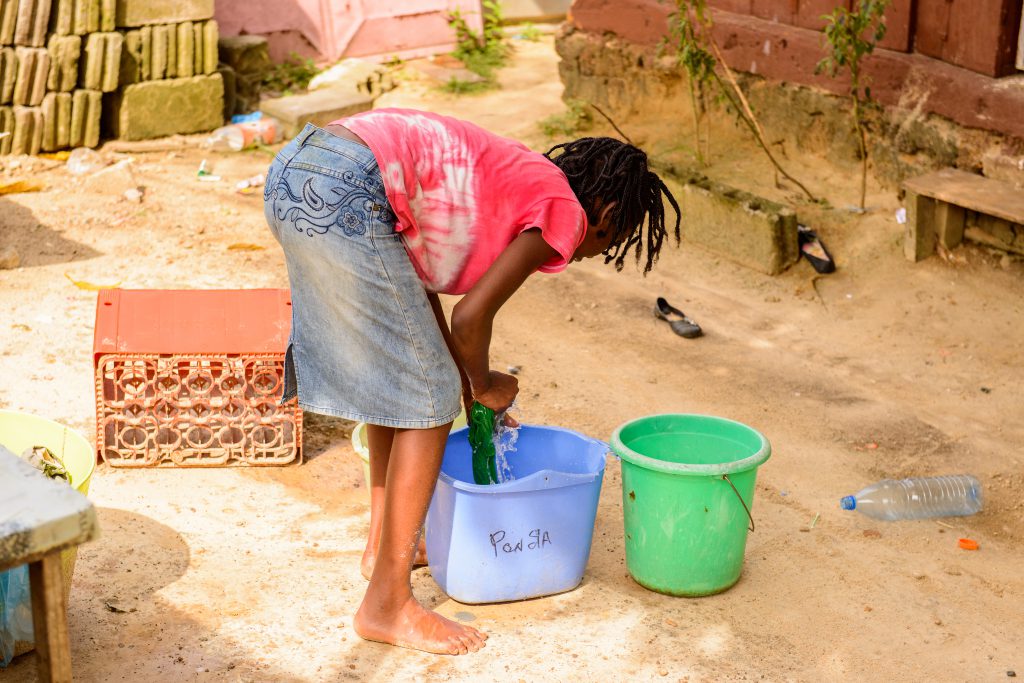
In Libreville for example, water shortages are frequent and a result of Gabon’s lack of storage and maintenance facilities along with its low capacity for producing drinking water. Additionally, inadequate wastewater and rainwater networks, sewage and waste management and improved water sources illustrate the problem Gabon faces in terms of sanitation and access to good facilities. When there is a lack of clean water supplies and proper sanitation facilities, there is a heightened risk of contracting neglected tropical diseases ( NTDs) and a large section of the population is at risk of getting infected from soil-transmitted helminthiasis, lymphatic filariasis and schistosomiasis (Doran, 2017).
However, there are significant ongoing efforts to reach the goal of providing clean water to all. Gabon’s first Libreville Integrated Drinking Water Supply and Sanitation Program seeks to achieve universal access to sustainable forms for obtaining drinking water and sanitation services by 2025. The program is scheduled to be implemented over a four-year period (AFDB, 2019).
It calls for an expansion of the drinking water network out from the capital thereby reaching an additional 300,000 more people in surrounding areas, resulting in the cities of Akanda, Owendo and Ntoum benefiting greatly from this improvement in infrastructure (Shrestha, 2020).
In Gabon, it was common for shared sanitation facilities by two or more households but that has significantly improved with levels dropping from 36% of the population in 2003 to 27% in 2017 and it is a possibility that soon, every single household can have its own sanitation equipment. These improvements can be largely attributed to the prioritisation of increasing infrastructure as well as outreach programs by the government and international organizations (Shrestha, 2020).
Open defecation has numerous health concerns and although only 3% of Gabon’s population practices it as of 2017, there is cause for concern since only 1% of its population engaged in it in the year 2000 (Shrestha, 2020).
Risk Factors → Country-specific challenges
Child trafficking
Although there have been efforts by the Government of Gabon, the country does not fully meet the minimum standards for the elimination of trafficking and the reality is that children are still exposed to the harsh realities of trafficking. Being on the west coast of Africa, Gabon is a potential hot spot and immigrant children from countries like Nigeria, Mali, Togo and Benin are brought into the country amongst which a large section of the children are girls who are then exploited for labour. An additional consequence for these migrant children is the inescapable exposure to crime, sexual harassment and violence (UNICEF, n.d.).
The Trafficking in Persons Procedural Manual developed a framework to deal with trafficking beginning from identification all the way till the repatriation of child victims, and in 2019, officials documented 30 child trafficking victims (U.S. Department of State, 2021).
In regard to shelters, the main issue is that most operate with a number of inhabitants that they are unequipped to handle. This overcrowding led to law enforcement officers significantly decreasing their follow-ups regarding child trafficking cases stemming from their belief that it would be an impossibility to place the victims in facilities with an infrastructure that is unequipped to take care of them. In 2020, officials suspended repatriations as a consequence of the pandemic and this meant that children ended up staying in shelters longer, which in turn aggravated problems of overcrowding (U.S. Department of State, 2021).
Although earlier, the government sought restitution for victims, it didn’t report doing so during this reporting period and while there was a possibility for victims to file civil suits against their traffickers, this never occurred and a large part of this has to do with the lack of awareness regarding this option. A decrease in prevention efforts by the government is backed by the fact that for the second consecutive year, the president did not sign the country’s anti-trafficking national action plan into law (U.S. Department of State, 2021).
Child labour
Child labour is a direct violation of children’s rights and completely halts the possibility of them leading a life of freedom, personal choice and basic comforts. Unfortunately, child labour is a devastating reality for children in Gabon.
Legally in the country, the minimum age for work provisions only adheres to children in formal employment relationships, which does not conform to the international standards that necessitate that all children must be protected by the minimum age for work. Consequently, the Labor Code prohibits child under the age of sixteen to work, but the minimum age protections do not apply to children outside formal work relationships which again in turn does not conform to international standards that state and hold up the fact that all children must be protected under the law (Bureau of International Labor Affairs, 2020).
Additionally, in terms of assessment and outreach, labour inspectors do not have the authority to assess penalties and lack the basic resources that are needed to carry out investigations. In November 2020, along with UNICEF, the Ministry of Justice began a hotline (Supermwana line) to report potential child abuse cases to authorities of which child labour fell into the bracket, and the government took eighty children from conditions that fostered exploitation and provided social services to all of them (Bureau of International Labor Affairs, 2020).
As mentioned earlier, Gabon is a significant spot for child trafficking from other countries in Central and West Africa and while parents entrust the lives of the children to intermediaries who assure quality education and safe work opportunities, the reality paints a grimmer picture and children oftentimes are subjected for labour exploitation (Bureau of International Labor Affairs, 2020).
Reports state that children primarily are assigned work in the informal sector and end up taking positions as street vendors, most often selling fruits and beauty products in Libreville markets as well as other urban centres including Port- Gentil. Alongside this, boys are taken to work in fishing, mechanic shops, and microbus transportations and are tasked with cleaning market spaces after they have closed (Bureau of International Labor Affairs, 2020).
Girls’ rights
Teenage pregnancies not only set the stage for a difficult life for the child but it is also a massive compromise for the mother in regard to her quality with her freedom taken away from her and responsibilities coming into her life at a young age. In Gabon, early pregnancies arise as a consequence of a lack of awareness and information in regard to sex education.
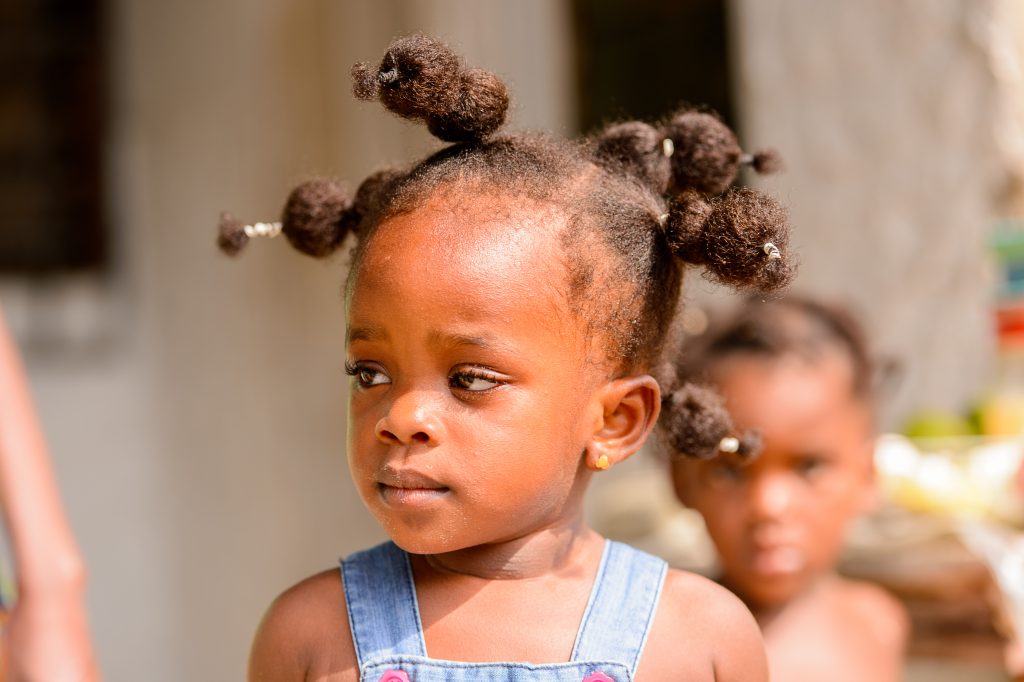
This is a contributing factor to maternal mortality which, in 2012, was an estimated 316 deaths per 1000,000 live births. Additionally, 11% of adolescent girls are either married or living in a union and access to contraception is drastically low with 58% not having any access at all (UNFPA, 2019).
In 2015 the School-based Early Pregnancy Survey noted that 51% of early pregnancy victims in school are girls in the lower secondary education, and this, in turn, affects their educational growth with 45% of teenage mothers facing academic difficulties, 44% repeating at least once and 8% dropping out of school entirely (UNFPA, 2019).
Children with HIV/AIDS
HIV/AIDS is a pressing issue in Gabon with an estimated 3.8% of adults suffering from the disease, which makes it the 14th worst affected country in the world. The most recent data collected in 2020 shows a figure of 2900 children between the age of zero to fourteen living with HIV in Gabon (UNAIDS, 2020).
In light of the rise and spread of this disease, there have been measures taken to attempt to curb it and raise awareness (Kuo, 2020). One such measure taken has been the HIV awareness events hosted in high schools in Ndende and Fougamou which in turn catered to more than 3000 students (UNAIDS, 2017).
Female genital mutilation
Female genital mutilation, a practice that is abominable and in no way benefits the health of a woman, is still unfortunately a reality in Africa with numerous communities that engage with this practice in twenty-nine countries (UNFPA, 2020). However, a largely positive turnout is the fact that this heinous practice was never a part of Gabonese culture and that it has been outlawed since 2010 (OHCHR, 2016).
Environmental issues
Climate change has been at the helm of global changes and Gabon is no exception. Moreover, the country is at risk of hydrometeorological hazards and natural disasters with events such as seasonal flooding, landslides, extreme winds and changing precipitation. These natural calamities result in the agricultural, oil, water and mining sectors taking a severe hit as a consequence (World Bank Climate Change Knowledge Portal, n.d.).
Gabon is also experiencing a rise in temperature with predictions of extreme weather events being made which in turn will gravely impact the different sectors of the economy as well as the population. People who belong to the low socioeconomic strata are particularly at risk and more susceptible to the negative effects of climate change (World Bank Climate Change Knowledge Portal , n.d.).
Of the different sectors that are susceptible to face damage in the face of climate change, agriculture is one of the main ones. Temperature changes and precipitation have the power to affect the physical, biological, and chemical composition of the soil. The agricultural sector in Gabon is responsible for employing over 50% of the population and thus climate change affecting this sector is a major cause for concern. Added to this is the fact that only 5% of the country is arable and can be used for plantation and subsistence farming despite Gabon being heavily forested ((World Bank Climate Change Knowledge Portal, n.d.).
Flooding is a particularly high hazard for Gabon. River floods that have life-threatening consequences and damages are expected to be a phenomenon that would take place at least once in the next ten years. Additionally, Gabon is also at risk of sea-level rise which can set the grounds for flooding in coastal areas (World Bank Climate Change Knowledge Portal , n.d.).
Written by Aditi Partha
Last updated on 5 October 2021
Bibliography:
World Bank Climate Change Knowledge Portal. (n.d.). country/gabon/impacts-agriculture. Retrieved from (World Bank Climate Change Knowledge Portal: https://climateknowledgeportal.worldbank.org/country/gabon/impacts-agriculture, accessed on 28 September 2021.
ACERWC. (2021, October 3). about-the-charter/. Retrieved from ACERWC: https://www.acerwc.africa/about-the-charter/, accessed on 28 September 2021.
AFDB. (2019, February 19). /en/documents/document/gabon-water-and-sanitation-sector-development-programme-first-libreville-integrated-drinking-water-supply-and-sanitation-programme-piaepal-drinking-water-component-appraisal-report-107894. Retrieved from AFDB: https://www.afdb.org/en/documents/document/gabon-water-and-sanitation-sector-development-programme-first-libreville-integrated-drinking-water-supply-and-sanitation-programme-piaepal-drinking-water-component-appraisal-report-107894, accessed on 2 October 2021.
Bureau of International Labor Affairs. (2020). agencies/ilab/resources/reports/child-labor/gabon#. Retrieved from DOL: https://www.dol.gov/agencies/ilab/resources/reports/child-labor/gabon#:~:text=Children%20in%20Gabon%20engage%20in,child%20labor%20in%20domestic%20work.&text=Children%20also%20engage%20in%20child%20labor%20in%20domestic%20work.,-(1%2D7), accessed on 25 September 2021.
Doran, G. (2017, August 14). disparity-water-quality-in-gabon/. Retrieved from Borgen Project: https://borgenproject.org/disparity-water-quality-in-gabon/, accessed on 28 September 2021.
Gardinier, D. E. (2021, March 10). /place/Gabon/History#ref40749. Retrieved from Britannica: https://www.britannica.com/place/Gabon, accessed on 28 September 2021.
Kuo, E. (2020, August 4). healthcare-in-gabon/. Retrieved from Borgen Project: https://borgenproject.org/healthcare-in-gabon/, accessed on 17 September 2021.
Obounou, D. B. (2017). Gabon health care system: a 20 year analysis. Korea: International Journal of Community Medicine and Public Health, accessed on 17 September 2021.
OHCHR. (2016, May 27). en/NewsEvents/Pages/DisplayNews.aspx?NewsID=20029&LangID=E. Retrieved from OHCHR: https://ohchr.org/en/NewsEvents/Pages/DisplayNews.aspx?NewsID=20029&LangID=E, accessed on 28 September 2021.
Paez, G. (2017, November 12). /education-in-gabon/. Retrieved from borgenmagazine: https://www.borgenmagazine.com/education-in-gabon/, accessed on 20 September 2021.
Shrestha, M. (2020, August 4). /sanitation-in-gabon/. Retrieved from Borgen Project: https://borgenproject.org/sanitation-in-gabon/, accessed on 23 September 2021.
U.S. Department of State. (2021). 2021 Trafficking in Persons Report: Gabon. U.S. Department of State, accessed on 28 September 2021.
UNAIDS. (2020). en/regionscountries/countries/gabon. Retrieved from UNAIDS: https://www.unaids.org/en/regionscountries/countries/gabon, accessed on 22 December 2021.
UNESCO. (n.d.). country/GA. Retrieved from Unesco: http://uis.unesco.org/country/GA, accessed on 18 September 2021.
UNFPA. (2019, September 26). fr/news/preventing-early-pregnancy-adolescent-girls-provinces-“haut-ogooue”-and-moyen-ogooue-gabon. Retrieved from UNFPA: https://gabon.unfpa.org/fr/news/preventing-early-pregnancy-adolescent-girls-provinces-%E2%80%9Chaut-ogooue%E2%80%9D-and-moyen-ogooue-gabon, accessed on 28 September 2021.
UNFPA. (2020, July). resources/female-genital-mutilation-fgm-frequently-asked-questions. Retrieved from UNFPA: https://www.unfpa.org/resources/female-genital-mutilation-fgm-frequently-asked-questions, accessed on 22 September 2021.
UNICEF. (n.d.). /gabon/en/child-protection. Retrieved from UNICEF: https://www.unicef.org/gabon/en/child-protection, accessed on 28 September 2021.
UNICEF. (n.d.). gabon/en/adolescents-development-and-participation-adap. Retrieved from UNICEF: https://www.unicef.org/gabon/en/adolescents-development-and-participation-adap, accessed on 24 September 2021.
WHO. (2020, October 23). news/testing-core-gabons-covid-19-battle. Retrieved from World Health Organization: https://www.afro.who.int/news/testing-core-gabons-covid-19-battle, accessed on 28 September 2021.
WHO. (n.d.). HEALTH FINANCING AND BUDGETING REFORMS IN GABON. Geneva: WHO, accessed on 22 September 2021.
World Bank . (2021, May 10). en/country/gabon/overview#1. Retrieved from World Bank : https://www.worldbank.org/en/country/gabon/overview#1, accessed on 22 September 2021.
World Bank Climate Change Knowledge Portal . (n.d.). country/gabon/climate-data-historical. Retrieved from climateknowledgeportal.worldbank: https://climateknowledgeportal.worldbank.org/country/gabon/climate-data-historical, accessed on 2 October 2021.
World Bank Climate Change Knowledge Portal. (n.d.). /country/gabon/vulnerability. Retrieved from World Bank Climate Change Knowledge Portal: https://climateknowledgeportal.worldbank.org/country/gabon/vulnerability, accessed on 2 October 2021.
[1] This article by no means purports to give a full or representative account of children’s rights in Gabon; indeed, one of many challenges is the scant updated information on the children in Gabon, much of which is unreliable, not representative, outdated or simply non-existent.

